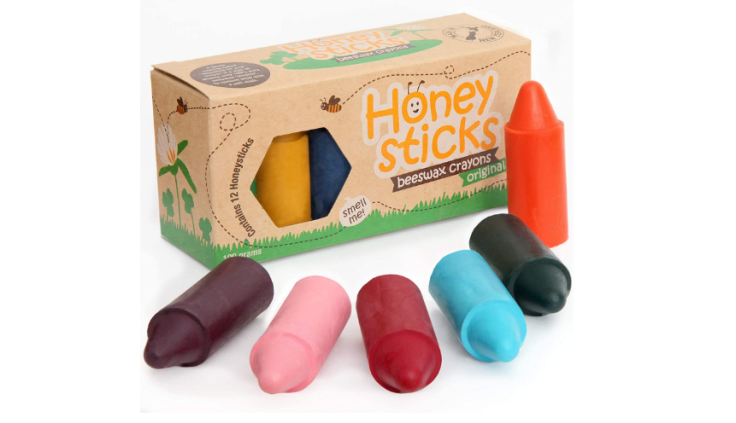Our Favorite Pick for Toddler Crayons


Toddlers love channeling their inner Picasso or Pollock. Leave a 3-year-old with a crayon near a white wall and in no time you’ll have your own version of the “Women of Algiers” or “Number 6”.
If your child shows such interest, it might be time for art supplies. No, this is not counterintuitive. These supplies are in the form of non-toxic, toddler-sized, removable crayons.
They are fun and perfect for creative development.
We have just described the Honeysticks Beeswax Crayons.
If you find yourself pulling things out of your child’s mouth on a constant basis -- dog toys, crumbs on the kitchen floor -- Honeysticks allow you a break from constant checking, because these crayons are made from 100% beeswax with food-grade pigments for color. Honeysticks are compliant with global safety standards -- the crayons are handmade in New Zealand -- so you have no need to worry when your child tires of scribbling and uses the crayon as a snack. They’re also extra-wide and durable, making them easier to grip and harder to break. These toddler-appropriate crayons have a competitively marked price tag. And they smell like honey! All in all, you got yourself a great deal.
Many think so: These baby-appropriate crayons have an Amazon’s choice tag and a 4.7/5 rating. One parent went to great lengths to explain why these crayons give her peace of mind, while another simply wrote that the vibrant colors, organic ingredients and child-appropriate standards made it an immediate must-try, leading to satisfaction. The price point has also been well noted, as well as the overall crayon quality.
So if your little Picasso is already making the initial touches to the next (wall) masterpiece, then we suggest getting them the Honeysticks Beeswax Crayons to help fuel that creativity. Maybe introducing paper as the new medium is just a thought.
Medically reviewed by Yvonne Stolworthy, MSN, RN.
If you're interested in reading how Medical Daily reaches its Top Pick conclusions, please click here.



























